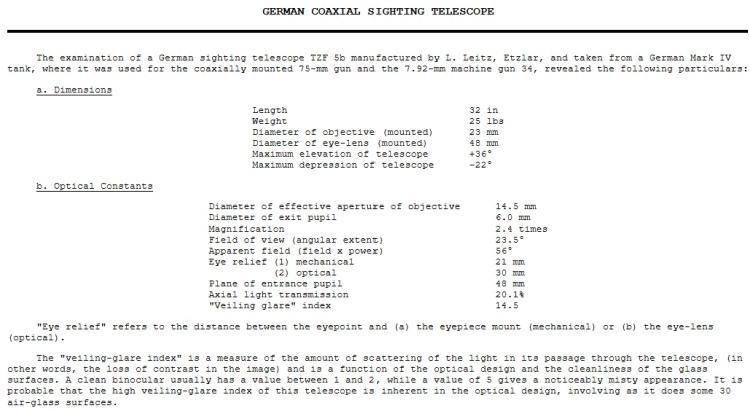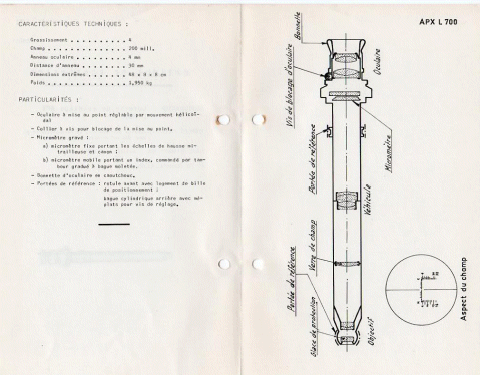|
Optic Calculations |
||


|
From the data on the TFZ 5b sight below we see that it has light transmission of 20.1%. That is very low. It is a wonder why anyone would think that this German sight can be called a clear specimen. How would these get a reputation of being able to see in low light better than other sights? link |
||

|
To see how it may be almost impossible to have such a low transmission figure if there is a coating. We can try to calculate the light transmission given that we know the light transmission loss from glass and air-glass surfaces. First of all light loss calculations are multiplication reduction of the original light beam. So light passing through a glass pane or lens has an affect by multiplying less than 1 . If the light loss of the first surface is 5% then light loss of the second surface is 5% of the remaining light. 95% x 95% of the light should pass through 0.95^2 or 90.25%. It is not additive. |
||
|
In measuring a French APX L700 direct sight of 14 pairs of air-glass surfaces appears like the total glass a ray passes about 7.9 cm of glass. Now, modern optical glass loses 2% of the light per cm. Let's say that WWII glass loses 3% per cm. For a test lets say a light ray will pass through a total of 9 cm of glass in an articulated German sight. So there would be on average of 0.6 cm of glass per pair (9/15) of air-glass surfaces. Or a loss of 1.8% per surface pair. By our sight page (page 37) we know the ordinary glass loses 4.25% per air-glass surface. So light loss per lens would be: (100-4.25) /100 x (100-1.8) /100 x (100-4.25) /100. Or, 90.03% of the light would remain (be transmitted by this one glass object). If this was the average of 15 glass lenses/prisms it would reduce the light transmission to 20.693%. |
||

|
French APX L700 direct sight 14 lenses , ~7.9 cm LOS glass. |
||
|
(0.9003 ^ 15) Almost the 20.1% of the British evaluated light transmission. This would mean that this German lens had no coating. Is that possible? |
||
|
Take for example the Russian TSh-16 articulated sight of the T-34-85 tank. |
||

|
Russian Tsh-16 articulated sight for T-34/85 tank. |
||
|
"Observation devices: the refractive telescopic sight is greatly superior to the sight of the model 1942-1943 T-34 tank. The clarity of the sight is on the level of the German 75 mm model 1940 gun" |
||

